I’ll be honest—when I first told people I was planning to travel across Africa, the reactions ranged from “wow, that’s brave” to outright concern about whether I’d considered all the “dangers.” It’s 2025, and somehow Africa still gets painted with this ridiculously broad brush, like it’s one massive country rather than 54 distinct nations spanning desert, rainforest, savanna, and coastline.
So let me clear something up right away: traveling around Africa isn’t some extreme sport. It’s also not a walk in the park everywhere. It’s… travel. Sometimes brilliant, occasionally frustrating, always memorable. And if you’re reading this because you’re curious about how to actually do it—not just dream about it—then you’re in the right place.

Understanding Africa’s Geography (Because Size Actually Matters)
Here’s something that blew my mind: you could fit the United States, China, India, Europe, and Japan inside Africa with room to spare. The Mercator projection map we all grew up with? Yeah, it’s been lying to us about how massive this continent really is.
What this means practically is that “traveling around Africa” isn’t like hopping between European cities on a weekend rail pass. We’re talking serious distances. Lagos to Nairobi is roughly the same as New York to London. Cape Town to Cairo? That’s further than Sydney to London.
I mention this not to discourage you, but because understanding the scale completely changes how you plan. You’re not going to “do Africa” in two weeks. You’re going to experience a slice of it, and that’s perfectly fine.
Choosing Your Route: The Regional Approach
Most seasoned Africa travelers think in regions rather than trying to tick off countries like a checklist. Here’s how I’d break it down:
East Africa: The Classic Entry Point
East Africa tends to be the most tourist-friendly region, which honestly makes it perfect if this is your first rodeo. Kenya, Tanzania, Uganda, and Rwanda have well-established tourism infrastructure, and English is widely spoken.
The East African Tourist Visa lets you move between Kenya, Uganda, and Rwanda on a single visa—which is basically the continent saying “please, explore more.” It costs around $100 and lasts 90 days.
Tanzania is where I’d start if safaris are your thing. The Serengeti doesn’t disappoint, though it’s become so popular that you’ll sometimes feel like you’re in a traffic jam of Land Cruisers all watching the same lion. Head to Ruaha or Katavi if you want that “undiscovered” feeling.
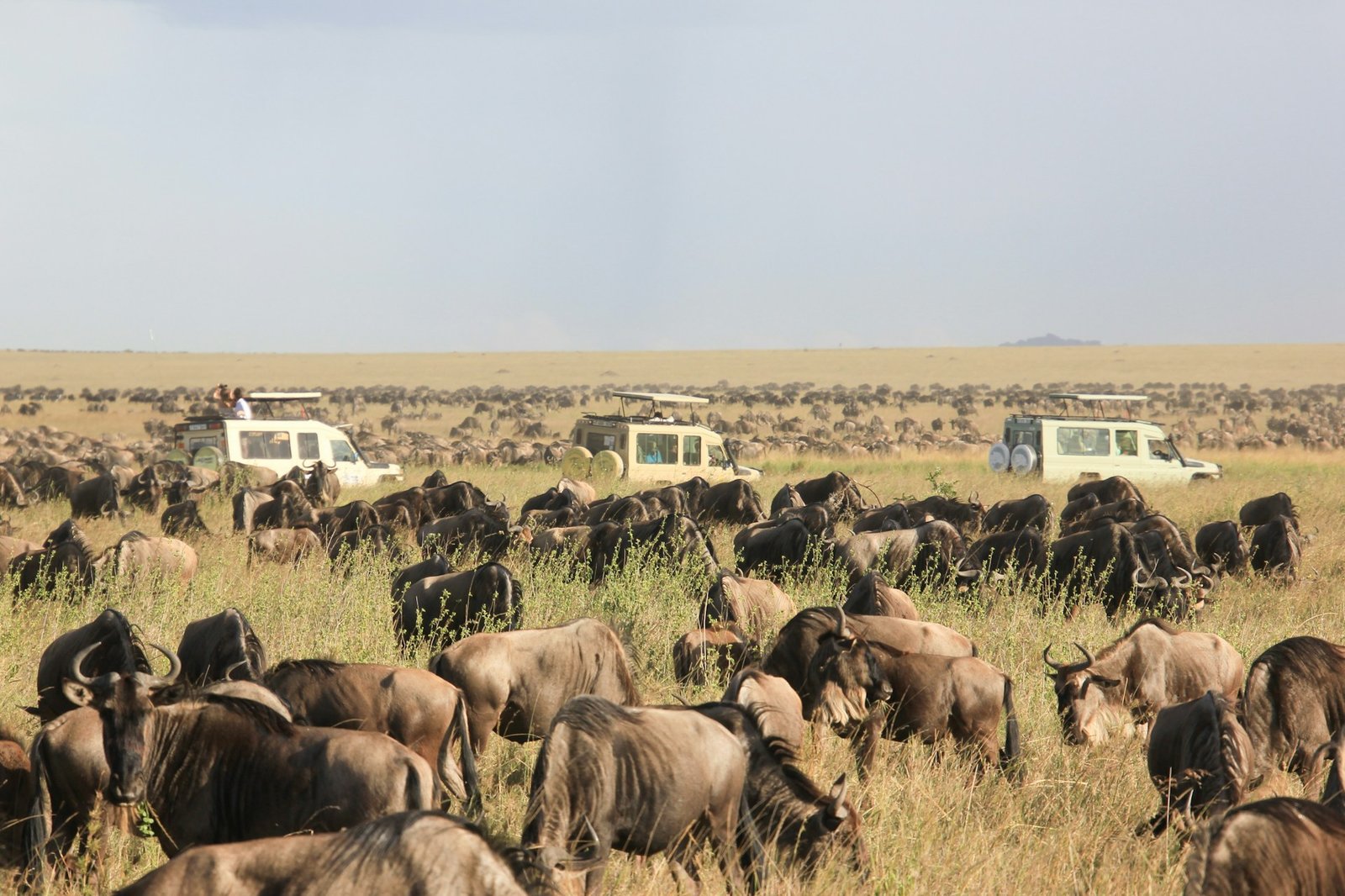
Southern Africa: Infrastructure and Diversity
Southern Africa—think South Africa, Namibia, Botswana, Zimbabwe, Zambia—offers probably the easiest travel conditions on the continent. Roads are generally good, tourist services are reliable, and you can actually drink tap water in places like South Africa.
South Africa itself is like Africa’s greatest hits album. You’ve got world-class cities in Cape Town and Johannesburg, incredible wine regions, Big Five safaris in Kruger, dramatic coastlines, and mountains. It’s almost annoyingly diverse.
Namibia is where I fell in love with silence. The desert landscapes feel otherworldly—Sossusvlei’s red dunes, the Skeleton Coast, the night skies that make you question why you ever lived in a city.
West Africa: For the Adventurous
West Africa doesn’t get the tourist numbers of East or Southern Africa, which is both a blessing and, well, a reality check. Infrastructure can be challenging, and you’ll need more patience and flexibility.
But here’s what West Africa offers: authenticity that’s harder to find in more touristy regions, incredible music scenes (Lagos and Accra are absolutely buzzing), and some of Africa’s most interesting cultural experiences.
Ghana is probably your best starting point—it’s relatively stable, English-speaking, and has a growing tourism sector. Senegal is another solid choice, especially if you speak French.
North Africa: The Mediterranean Meets the Sahara
North Africa technically sits on the same landmass but culturally and logistically feels like a different world. Morocco, Egypt, and Tunisia are the most visited, and they’re set up for tourism in ways that make travel fairly straightforward.
Morocco is perhaps my favorite for first-timers to the region. It’s close to Europe, relatively affordable, visually stunning, and offers everything from beach towns to mountain kasbahs to the Sahara itself.
Transportation: Your Actual Options
Let me walk you through the real ways people move around Africa, because this is where theory meets sweaty, bumpy reality.
Flying: Expensive But Sometimes Necessary
Here’s the frustrating truth: flying within Africa often costs more than flying to Africa from Europe or the US. The lack of open skies agreements and limited competition means you might pay $600 for a two-hour flight.
That said, Ethiopian Airlines, Kenya Airways, and South African Airways have the most extensive route networks. Ethiopian in particular has positioned itself as Africa’s hub airline, and their Addis Ababa hub can get you almost anywhere on the continent.
Budget airlines are emerging—FlySafair in South Africa, Fastjet in East Africa, Air Arabia in North Africa—but the network isn’t as comprehensive as you’d find in Europe or Asia.
Overland: Buses and Shared Taxis
This is how most Africans actually travel, and it’s how you’ll have your most memorable (for better or worse) experiences.
Long-distance buses vary wildly in quality. In Southern and East Africa, companies like Intercape in South Africa and Modern Coast in Kenya offer fairly reliable service with reclining seats and air conditioning.
Shared minibuses—called matatus in Kenya, dala dalas in Tanzania, tro tros in Ghana—are the backbone of local transport. They’re cheap, they leave when full (not according to any schedule), and they’re an adventure in personal space negotiation. I once shared a row meant for three with five other people plus someone’s chicken. You haven’t lived until you’ve done this.
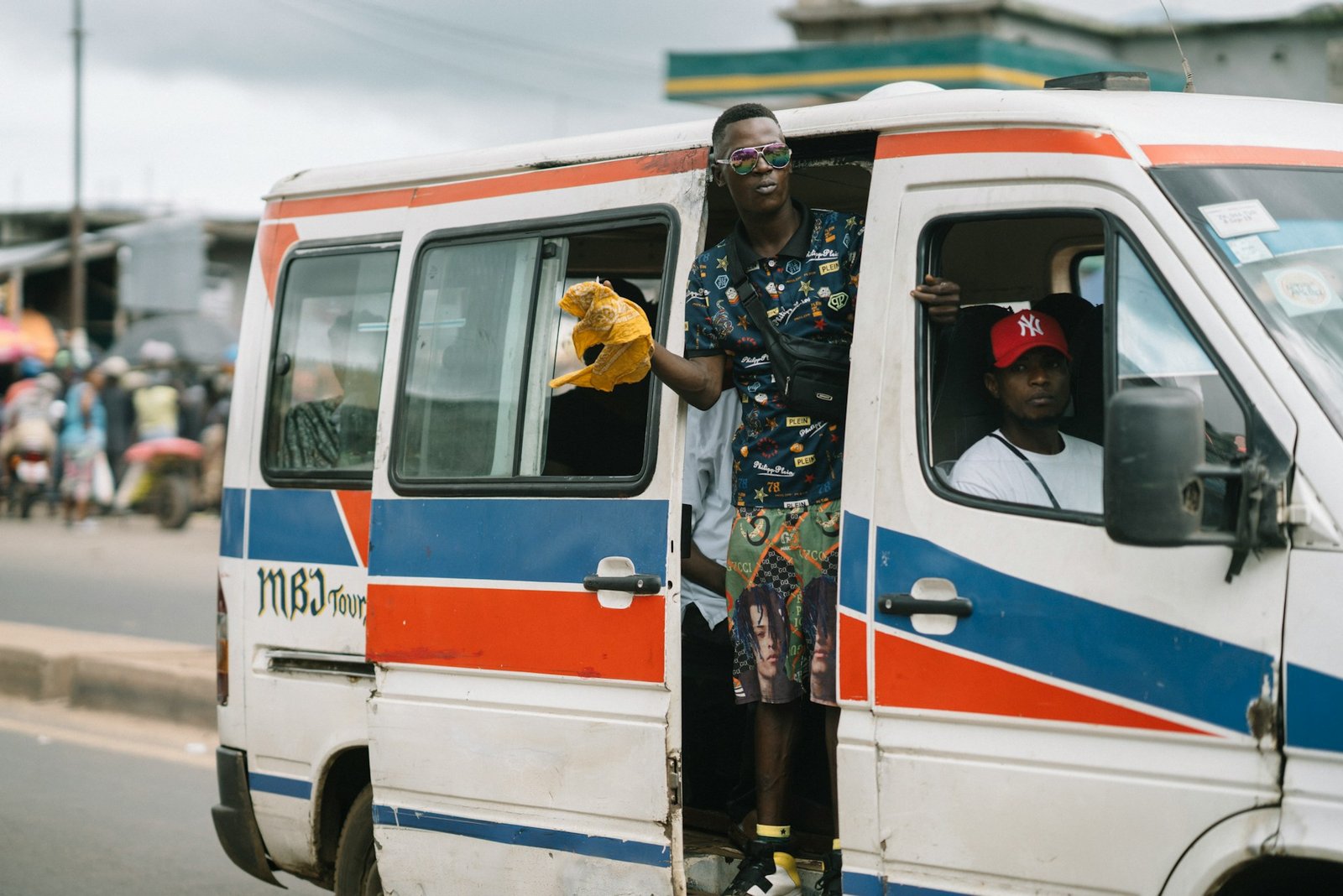
Self-Drive: Freedom With Responsibility
Renting a vehicle gives you incredible freedom, but it comes with considerations. Road conditions vary from excellent highways to tracks that barely qualify as roads. Traffic rules are… interpreted creatively in many places.
Southern Africa and parts of East Africa are most suited to self-drive. Bushlore and Drive South Africa offer 4×4 rentals with camping gear, which is honestly the way to go if you’re doing this properly.
You’ll need an international driving permit in most countries, and familiarize yourself with each country’s requirements—some require a local permit in addition.
Organized Tours: Sometimes Worth It
I’m usually a DIY traveler, but even I’ll admit that organized overland tours make sense for certain trips. Intrepid Travel, G Adventures, and Acacia Africa run excellent small-group overland expeditions.
These make particular sense if you’re doing a major crossing—like Cape Town to Nairobi—and want the logistics handled. You’ll travel in a custom truck, camp most nights, and have guides who know the border crossings and best routes.
Visas: The Bureaucratic Reality
Visa requirements are perhaps the most frustrating aspect of African travel. Unlike Europe’s Schengen or Southeast Asia’s relatively relaxed policies, Africa is a patchwork of different requirements.
Some good news: visa-on-arrival or e-visa systems are becoming more common. Kenya, Tanzania, Rwanda, Ethiopia, Zimbabwe, and Zambia all offer this. iVisa aggregates many e-visa applications, though applying directly through government sites often costs less.
The African Union has been pushing for visa-free travel between member states, but implementation is slow. Seychelles currently offers visa-free entry to all Africans—progressive, but islands aren’t exactly the biggest overland travel destination.
My advice: check requirements at least two months before travel. Some embassies require you to apply in your country of residence, not while you’re already traveling.
Money Matters: Budgeting for Real
How much does it cost to travel around Africa? I hate this question because the range is absurd—you could spend $30 a day or $500+, and both are legitimate ways to travel.
Budget travel in Africa typically means $40–70 per day. This gets you guesthouses or hostels, local transport, street food and local restaurants, and budget activities. Countries like Ethiopia, Malawi, and Mozambique sit at the lower end. Botswana and Seychelles? Forget it.
Mid-range ($100–200/day) opens up nicer accommodations, some domestic flights, better restaurants, and standard safari options. This is where most travelers probably land.
Insert image: African market money exchange scene
Cash vs. Cards
Credit cards are accepted in major cities and tourist areas, but cash remains king. ATMs are widely available in urban areas, less so in rural zones.
Carry US dollars or Euros as backup. Newer bills are preferable—some places refuse older currency. In Zimbabwe, USD is essentially the currency. Weird flex, but okay.
Mobile money (M-Pesa in East Africa) is revolutionary. I used it constantly in Kenya and Tanzania—safer than carrying cash, accepted everywhere, incredibly convenient.
Safety: Let’s Talk Real Talk
Is Africa dangerous? Some parts, sure. Is it uniformly dangerous? Absolutely not. Is it more dangerous than anywhere else? Debatable.
I’ve felt more unsafe in certain American cities than I ever did in Kigali or Windhoek. But I’ve also given sketchy areas in Lagos and Johannesburg a wide berth because, well, common sense.
General safety principles:
- Stay informed about current situations (political instability can flare up)
- Don’t flash wealth or expensive gear
- Take registered taxis or ride-shares, not random vehicles
- Trust your instincts about people and situations
- Keep copies of documents separately
- Have comprehensive travel insurance (World Nomads or SafetyWing are solid choices)
Certain regions have security concerns that you absolutely need to research: parts of the Sahel, northeastern Nigeria, parts of Mozambique, eastern DRC, and Somalia require serious consideration or avoidance.
Health Preparations: The Unsexy Essentials
Yellow fever vaccination is required for entry to many African countries. You’ll need your yellow card—the actual physical certificate—as proof. Don’t lose it.
Malaria is present in many regions. Prophylaxis (Malarone, doxycycline, or Mefloquine) is recommended for most of sub-Saharan Africa, less necessary for high-altitude areas or Southern Africa’s winter months.
Travel health insurance is non-negotiable. Medical care quality varies dramatically, and medical evacuation is expensive beyond belief.
I carry a basic medical kit: antimalarials, antibiotics (for traveler’s diarrhea), oral rehydration salts, antimalarial prophylaxis, antihistamines, and standard first aid supplies.
Accommodation: From Luxury to “Character”
Africa offers every accommodation type imaginable. Major cities have international hotel chains and boutique options. Tourist areas have everything from luxury safari lodges (like Singita) to backpacker hostels.
Booking.com and Hostelworld cover most established places. Airbnb is growing but less developed outside South Africa and major cities.
Camping is huge in Southern Africa—most countries have excellent campsites with facilities. It’s also the most budget-friendly option if you’re doing the overland thing.
Homestays and guesthouses offer the best cultural experiences. These aren’t always online; sometimes you find them by asking around.
Communication: Staying Connected
SIM cards are cheap and widely available. Buy one in each country rather than relying on international roaming, which is highway robbery.
MTN and Vodacom have the most extensive coverage across the continent. Expect to pay $5–15 for a SIM with several gigabytes of data.
Coverage is excellent in cities, decent along major routes, nonexistent in remote areas. Download offline maps (Maps.me or Google Maps offline mode) before heading to rural areas.
Food: An Underrated Highlight
African food doesn’t get nearly enough international recognition, which is criminal. Every region has distinctive cuisines worth exploring.
East Africa: nyama choma (grilled meat), ugali (maize porridge), chapati, pilau rice, samosas. The Indian influence in coastal areas means excellent curries.
West Africa: jollof rice (and yes, the Ghana vs. Nigeria debate is real and serious), fufu, suya, waakye, domoda (peanut stew). The flavors are bold and complex.
Southern Africa: braai (barbecue), biltong, bobotie, boerewors, bunny chow. South African food culture is wildly diverse.
North Africa: tagines, couscous, pastilla, mint tea, mezze spreads. The Mediterranean influence shines through.
Street food is generally safe if it’s busy and freshly cooked. I ate from street stalls constantly and only got sick once (lesson: maybe skip the mayonnaise-based salad in hot weather).

Cultural Considerations: Don’t Be That Tourist
Photography etiquette: Ask before photographing people. This should be universal, but somehow tourists forget. Some places or ceremonies prohibit photography entirely.
Dress conservatively, especially in Muslim-majority regions and rural areas. This isn’t about judgment; it’s about respect and not making yourself a target for unwanted attention.
Learn basic greetings in local languages. Even butchering “hello” and “thank you” in Swahili or Amharic goes a long way.
Haggling is expected in markets but be reasonable. That $2 difference matters more to the vendor than to you.
Tipping culture varies. East and Southern Africa expect tips (10–15% in restaurants, $10–20/day for safari guides). North Africa expects smaller amounts. West Africa is less tip-focused.
My Biggest Mistake (So You Don’t Repeat It)
I once tried to go from Nairobi to Dar es Salaam by bus overnight without researching the route. What I thought would be a simple 8–10 hour journey turned into 18 hours of rough roads, multiple police checkpoints, a 2 AM border crossing with mysterious “fees,” and a breakdown somewhere in the middle of nowhere.
I arrived exhausted, irritable, and having missed my Zanzibar ferry. The lesson? Flying sometimes saves more than money—it saves sanity. Pick your battles with overland travel.
Packing: Less Is Actually More
I’ve seen travelers with massive backpacks struggling on matatus. Don’t be them. Africa isn’t the place for your entire wardrobe.
Essentials:
- Quick-dry, neutral-colored clothing
- Sturdy, broken-in shoes (plus sandals)
- Headlamp
- Universal adapter
- Water purification (tablets or SteriPEN)
- Small daypack
- Sun protection (hat, sunscreen, sunglasses)
- Mosquito repellent with DEET
- Basic toiletries (many things aren’t available everywhere)
Best Times to Visit
Africa spans hemispheres and climate zones, so “best time” depends entirely on where you’re going.
East Africa: Dry seasons (June–October and January–February) are best for wildlife. The wildebeest migration in the Serengeti happens June–July.
Southern Africa: May–September offers cool, dry weather perfect for safaris. December–February is hot and wet.
West Africa: Dry season (November–March) is most comfortable. The rainy season isn’t necessarily a dealbreaker but makes travel harder.
North Africa: Spring (March–May) and fall (September–November) avoid the extreme heat.
Resources That Actually Help
Lonely Planet guides remain useful for Africa, where online information can be outdated or scarce.
Rome2rio helps figure out transportation options between cities.
XE Currency converter is essential given the number of currencies you’ll encounter.
Seat61 has excellent information on Africa’s limited but growing rail network.
Travel forums like Lonely Planet’s Thorn Tree, Reddit’s r/travel, and Africa-focused travel blogs provide current, traveler-sourced information.
Final Thoughts
Traveling around Africa changed how I see travel itself. It’s not always easy or comfortable, but it’s authentic in ways that feel increasingly rare. You’ll encounter frustrations—transport delays, bureaucratic nonsense, occasional scams—but also generosity, humor, and hospitality that restore your faith in humanity.
The biggest barrier to African travel isn’t the continent itself; it’s the outdated perceptions and hesitations many travelers bring to it. Africa isn’t a monolith to be feared or a bucket list to be conquered. It’s 54 countries worth experiencing on their own terms.
So perhaps stop overthinking it. Pick a region, do reasonable preparation, maintain flexibility, and go. The adventure won’t be exactly what you planned, and that’s entirely the point.
Frequently Asked Questions
Is it safe to travel around Africa?
Answer: Safety varies significantly by country and region. Many African countries are as safe as anywhere else in the world—Rwanda, Botswana, Namibia, and Ghana are notably secure. Major cities have crime like any urban area, so standard precautions apply. Research current conditions for specific destinations, avoid conflict zones, and use common sense. Millions of tourists visit Africa annually without incident.
How much money do I need to travel Africa?
Answer: Budget travelers can manage on $40–70 per day in most countries, covering basic accommodation, local transport, and street food. Mid-range travel runs $100–200 daily. Luxury safaris and high-end lodges can cost $500+ per day. Countries like Ethiopia and Malawi are cheaper, while Botswana and Seychelles are pricier. Your biggest expense will likely be flights and safari activities.
Do I need vaccines to travel to Africa?
Answer: Yellow fever vaccination is mandatory for many African countries. Routine vaccines (MMR, tetanus, hepatitis A) should be current. Hepatitis B, typhoid, and rabies vaccines are recommended depending on your itinerary. Malaria prophylaxis is advised for most sub-Saharan regions. Consult a travel medicine clinic 6–8 weeks before departure for personalized recommendations.
Can I drink tap water in Africa?
Answer: Generally no, except in parts of South Africa and some tourist facilities. Stick to bottled water (check the seal is intact) or use purification tablets/filters. Ice is also risky in many places. Dehydration is a bigger risk than you’d think in Africa’s heat, so drink plenty but be smart about your water source.
What’s the best way to get around Africa?
Answer: It depends on your budget and comfort level. Flying is fastest but expensive—Ethiopian Airlines has the best network. Overland buses work for shorter distances and regional travel. Self-drive is excellent in Southern Africa if you’re comfortable with variable road conditions. Organized overland tours handle logistics for major crossings. Most African travelers use a combination of methods.
Do I need visas for African countries?
Answer: Most African countries require visas, though many now offer visa-on-arrival or e-visas. Requirements vary by nationality—US and EU passport holders have reasonably easy access to most countries. Some regions like East Africa offer single visas for multiple countries. Always check requirements months in advance as some embassies require applications in your home country.
What should I pack for an Africa trip?
Answer: Pack light with quick-dry, neutral-colored clothing, broken-in shoes, sun protection, insect repellent with DEET, basic medical supplies, headlamp, and copies of important documents. Layers work well for variable climates. A daypack is essential. Avoid overpacking—you can find basic supplies in cities, and carrying less makes transport easier.
Is it better to join a tour or travel independently in Africa?
Answer: Both work. Independent travel offers flexibility and authentic experiences but requires more research and patience. Organized tours (like G Adventures or Intrepid) handle logistics, ensure safety in challenging regions, and work well for major overland routes. Consider tours for safaris and difficult regions, independent travel for established tourist destinations.
What’s the cheapest way to see Africa?
Answer: Travel overland using local buses and shared minibuses, stay in hostels or campsites, eat street food and local restaurants, and do free walking tours in cities. Volunteering programs sometimes include accommodation. Traveling slowly in less-touristy countries (Malawi, Ethiopia, Mozambique) reduces costs. Skip expensive safaris or choose budget camping options. Expect $40–60 daily.
When is the best time to visit Africa?
Answer: It varies by region. East Africa’s dry seasons (June–October, January–February) are ideal for wildlife. Southern Africa is best May–September for safaris. West Africa’s dry season (November–March) offers comfortable travel. North Africa shines in spring (March–May) and fall (September–November). Consider what you want to see—migration, weather, or avoiding crowds.
Can I use my credit card in Africa?
Answer: Credit cards work in major cities, hotels, and tourist establishments, but cash dominates. Visa and Mastercard have better acceptance than American Express. ATMs are common in urban areas—notify your bank before traveling. Carry US dollars or Euros as backup. Mobile money (like M-Pesa) is widespread in East Africa and incredibly useful.
Are safaris worth the cost?
Answer: If wildlife is why you’re visiting Africa, absolutely. Budget camping safaris in Tanzania or Kenya run $150–250 per day. Mid-range lodge safaris cost $300–500 daily. Luxury options exceed $1,000 per day. Self-drive safaris in parks like Kruger or Etosha dramatically reduce costs. The experience of seeing animals in their natural habitat is genuinely unforgettable and unlike anything else.
Top Products and Travel Recommendations
- Ethiopian Airlines – Africa’s largest airline network with Addis Ababa hub connecting most major African cities, offering relatively affordable continental flights.
- G Adventures Africa Tours – Small-group overland adventures with local guides, focusing on sustainable and culturally immersive experiences across multiple African regions.
- Intrepid Travel Africa – Organized expeditions ranging from budget camping trips to comfortable overland journeys, excellent for first-time Africa travelers.
- World Nomads Travel Insurance – Comprehensive coverage including medical evacuation, specifically designed for adventure travel with flexible policies you can extend while traveling.
- SafetyWing Insurance – Affordable monthly travel medical insurance popular with digital nomads and long-term travelers, covering most African countries.
- Bushlore 4×4 Rentals – Fully equipped 4×4 camping vehicles for self-drive adventures through Southern Africa, including camping gear and insurance.
- Maps.me Offline Maps – Essential free app with detailed offline maps of African cities and roads, working without internet connection or data.
- iVisa Visa Services – Simplified e-visa applications for multiple African countries, consolidating requirements and processing in one platform.
- Rome2rio Route Planner – Invaluable tool for finding transportation options between African cities, showing buses, flights, and estimated costs.
- Singita Safari Lodges – Ultra-luxury eco-lodges in Tanzania, South Africa, Zimbabwe, and Rwanda offering exceptional wildlife experiences with conservation focus.
- Lonely Planet Africa Guidebook – Comprehensive regional guides covering practical information, cultural insights, and detailed maps essential for planning.
- SteriPEN Water Purifier – UV water purification device killing 99.9% of bacteria and viruses, essential for safe drinking water throughout Africa.
- Acacia Africa Overland – Specialized overland operator running camping and accommodated trips from weeks to months across the continent.
- Booking.com Africa Hotels – Extensive accommodation listings across African cities and tourist areas with reliable reviews and flexible cancellation.
- FlySafair South Africa – Budget airline covering major South African routes with reliable service and affordable fares.
- XE Currency Converter – Essential app for tracking multiple African currencies, offering offline rates and historical data.
- Intercape Buses – Reliable long-distance bus service throughout South Africa and into neighboring countries with comfortable coaches.
- Airbnb Africa Experiences – Growing accommodation options and unique local experiences hosted by residents in major African cities.
- Seat61 Africa Rail Guide – Detailed information on Africa’s rail networks including routes, booking procedures, and journey experiences.
- REI Travel Daypack – Durable lightweight daypack perfect for safaris, city exploration, and carrying essentials during African adventures.
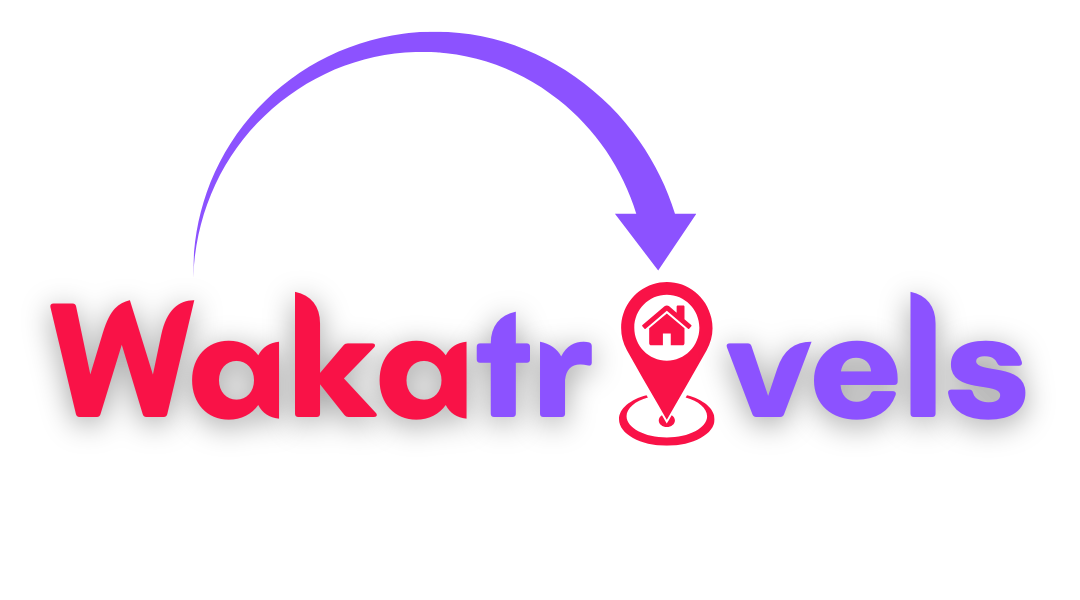

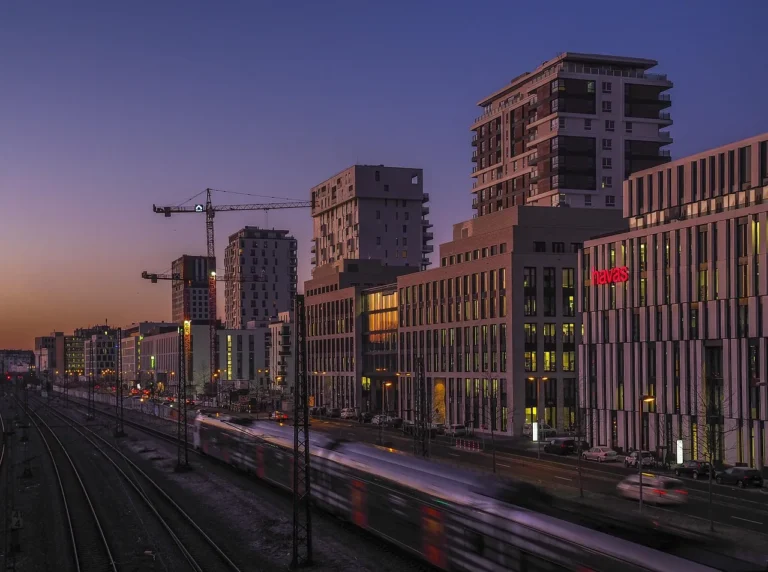



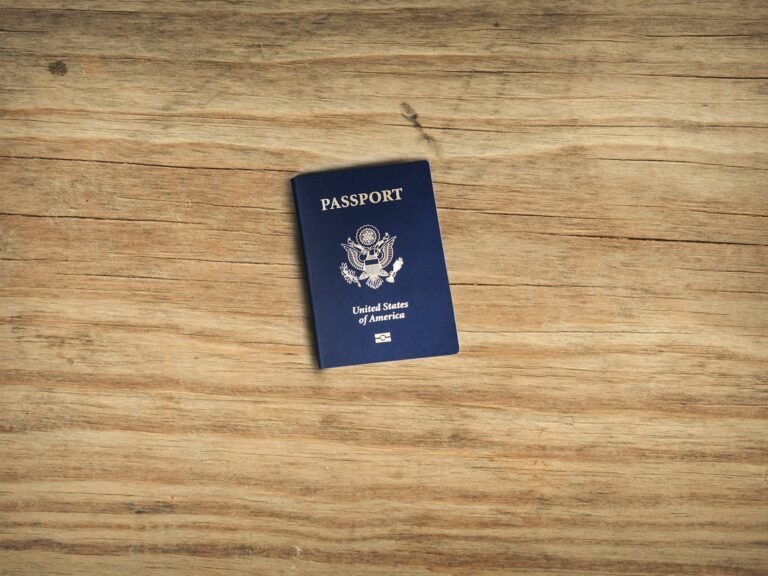
I don’t think the title of your article matches the content lol. Just kidding, mainly because I had some doubts after reading the article.